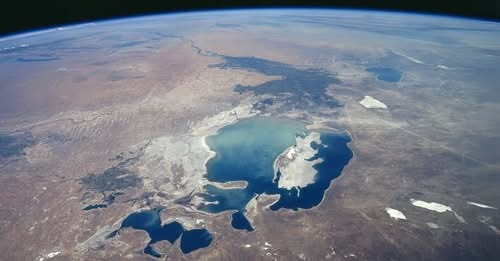When most of us look up at the night sky, we see peace: stars glimmering like diamonds, planets shining faintly, and the Moon hanging as a loyal companion. But hidden within that serene beauty is a threat that has kept astronomers, NASA scientists, and planetary defense experts awake at night. According to newly released projections, more than 2,300 asteroids are currently on potential collision courses with Earth — and right now, nothing humanity possesses can stop them.
For decades, scientists have tracked Near-Earth Objects (NEOs), rocky remnants of the early solar system that occasionally wander dangerously close to our planet’s orbit. Most pass harmlessly by. But some, due to gravitational nudges, orbital shifts, or chaotic cosmic interactions, drift toward impact trajectories. Today, mounting data suggests that humanity may be entering one of the most dangerous centuries in planetary history.
A Cosmic Minefield
Asteroids are the leftovers of creation, fragments of failed planets and shattered worlds that never coalesced. While the asteroid belt between Mars and Jupiter is their largest population, countless others are scattered across the solar system. Some break free due to Jupiter’s immense gravity and drift inward. Others are knocked off course by collisions, solar radiation pressure, or gravitational resonance.
NASA’s Center for Near-Earth Object Studies (CNEOS) currently tracks more than 35,000 NEOs. Out of these, 2,300 have been officially classified as “potentially hazardous” — meaning their orbits bring them within 7.5 million kilometers of Earth and they are large enough to cause catastrophic regional or even global damage.
While not every one of these 2,300 rocks will hit Earth, the probability that some eventually will is not zero. In fact, statistically, it is inevitable. Humanity is essentially driving down a cosmic highway, weaving between millions of celestial boulders — and sooner or later, one will not miss.
The Scale of the Threat
It’s easy to imagine an asteroid as a harmless space pebble. But size matters, and in this case, size can mean extinction.
- Small Asteroids (10–50 meters): These are city-killers. The Chelyabinsk meteor of 2013, only about 20 meters across, injured over 1,500 people and shattered windows across Russia with its shockwave. If it had exploded over a dense city, casualties could have been catastrophic.
- Medium Asteroids (100–500 meters): These are regional destroyers. They can release energy equivalent to hundreds of nuclear bombs, wiping out nations and triggering tsunamis, fires, and global supply chain collapses.
- Large Asteroids (1 km or more): These are planet-shakers. A rock of this size could disrupt Earth’s climate for years, leading to famine, mass extinctions, and possibly the collapse of civilization.
Among the 2,300 tracked asteroids, dozens fall into the kilometer-class category. While the likelihood of one hitting Earth in the next century is small, the consequences would be so devastating that experts consider the risk unacceptable.
Can We Stop Them?
In 2022, NASA successfully carried out the DART mission (Double Asteroid Redirection Test), deliberately crashing a spacecraft into the asteroid Dimorphos to alter its orbit. The experiment proved that humanity can, in principle, deflect an asteroid. But here’s the catch: DART targeted a small asteroid in a controlled test. The technique works only if we have decades of warning and if the asteroid is relatively small.
Against a larger, fast-approaching rock, our defenses are almost nonexistent. Nuclear weapons might be an option, but detonating one in space carries immense risks, and the physics of shattering or deflecting an asteroid are uncertain. Break it apart, and instead of one big impact, Earth could face a shotgun blast of smaller, but still deadly, fragments.
For now, planetary defense is in its infancy. Humanity has no deployed system capable of intercepting a rogue asteroid on short notice. If a surprise object appeared tomorrow with only weeks of lead time, our only options would be evacuation — and prayers.
The Troubling “Unknowns”
What makes the problem more urgent is that many asteroids slip past our detection systems. In July 2019, for example, a 130-meter asteroid named 2019 OK appeared seemingly out of nowhere, flying within 73,000 kilometers of Earth — about one-fifth the distance to the Moon. That is astronomically close in cosmic terms. Had it been on a collision course, there would have been no time to react.
The reason? Smaller asteroids are notoriously hard to spot. They are dark, irregular, and often come from the direction of the Sun, blinding our telescopes. Even with advanced surveys, experts estimate that less than half of hazardous asteroids have been discovered. That means the actual number of dangerous rocks heading our way could be far higher than 2,300.
History’s Grim Reminder
Sixty-six million years ago, a 10-kilometer asteroid struck near present-day Mexico, ending the age of the dinosaurs. The impact unleashed tsunamis, global wildfires, and a “nuclear winter” effect that blotted out the Sun for years. Seventy-five percent of all species vanished.
If such an event happened once, it can happen again. The difference is that today we have billions of human lives, fragile global infrastructure, and a highly interconnected economy. Even a much smaller strike — comparable to the Tunguska Event of 1908, when an explosion leveled 2,000 square kilometers of Siberian forest — could collapse food systems, cause financial panic, and ignite conflicts worldwide.
What Scientists Are Urging
Planetary defense experts are sounding alarms. The Vera Rubin Observatory in Chile, set to begin full operations soon, will revolutionize sky surveys, potentially spotting thousands of new asteroids. NASA’s upcoming NEO Surveyor mission, launching later this decade, will use infrared technology to detect dark objects hidden in the glare of the Sun.
But detection alone is not enough. Scientists stress the need for international cooperation. No single country can protect Earth. Plans for asteroid deflection missions, emergency response protocols, and even global food reserves in case of climate disruptions are urgently being discussed — but progress is slow, and funding is limited.
The Human Dilemma
Perhaps the most sobering aspect of this threat is psychological. Humanity has always believed itself to be in control of its destiny, building civilizations, technologies, and empires. Yet the cosmos reminds us how fragile we really are. A rock drifting silently for millions of years could, in a single instant, undo centuries of progress.
Still, there is hope. The very fact that we are aware of these 2,300 asteroids means science is buying us time. We are the first species in Earth’s history capable of detecting and potentially averting such a disaster. Whether we choose to invest in planetary defense may determine whether humanity’s story continues — or ends like the dinosaurs.
Conclusion
The news that 2,300 asteroids are headed toward Earth is not a sensational headline — it is a stark reality of living on a planet in a cosmic shooting gallery. Most of these objects may never touch us. But some almost certainly will, whether in a century, a thousand years, or ten thousand. The question is not if, but when.
And when that day comes, humanity will face the ultimate test: whether we can rise together as a planetary species, wielding science and unity against the indifferent forces of the universe — or whether we will be just another chapter in Earth’s long history of extinctions.





